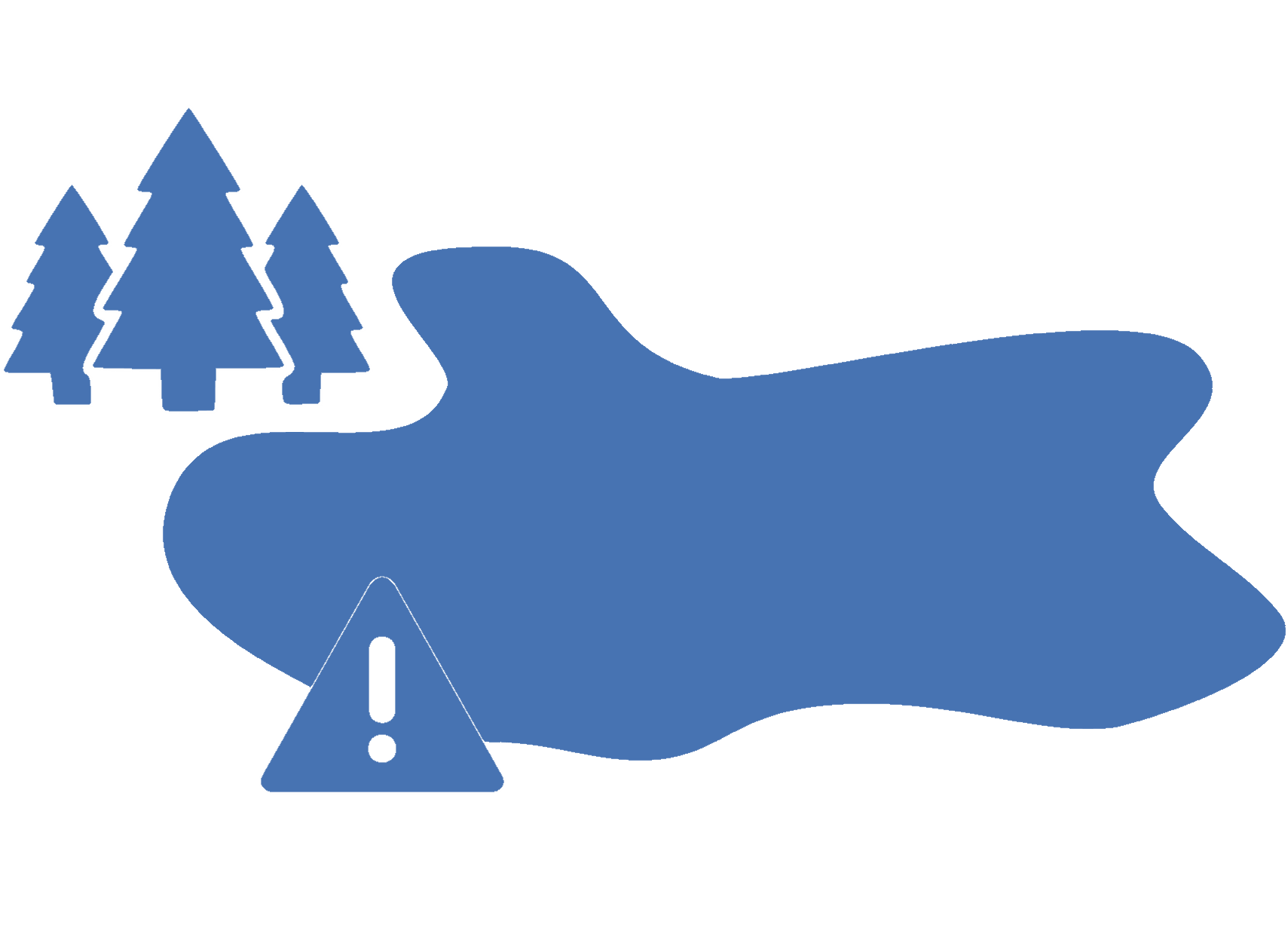This study aims to track and prevent harmful algal bloom illness state-wide, while also working locally in the Clear Lake, Lake County area to improve outreach, illness reporting, and drinking water monitoring.
Clear Lake has experienced an increase in Harmful Algal Blooms (HABs) activity since 2009 and over 60% of Lake County residents receive their drinking water from the Lake. Many self-supplied drinking water systems are neither tested nor treated for toxins from algal blooms, nitrates, coliform bacteria, and other contaminants.
Through Cal-WATCH, we aim to:
- Increase capacity statewide for reliable and accurate data collection for One Health Harmful Algal Bloom System (OHHABs) illness reporting and outreach to increase awareness of HABs.
- Increase outreach and communication around HABs with stakeholders in Lake County for recreational freshwater beaches and creeks to improve awareness, communication, and illness reporting.
- Identify private wells close to Clear Lake and alongside creeks in Lake County and connect with property owners to offer testing and raise awareness of well-water hazards.
- Identify private water intakes, offer testing, and increase communication between public health and drinking water entities and self-supplied drinking water systems drawing water from Clear Lake and nearby creeks.
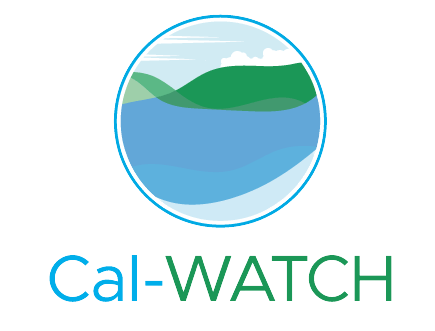
Key Project Information
Project Time Period
2020 - 2025
Project Funder
The Cal-WATCH project is supported by the Centers for Disease Control and Prevention of the U.S. Department of Health and Human Services (HHS) as part of a financial assistance award (1NUE1EH001427-01-00).
Project Partners
- Big Valley Band of Pomo Indians
- Office of Environmental Health Hazard Assessment (OEHHA)
- State Water Resources Control Board (SWRCB)
- California Department of Public Health (CDPH)
Project Contact
For more information, please contact david.chang@trackingcalifornia.org
Project Materials
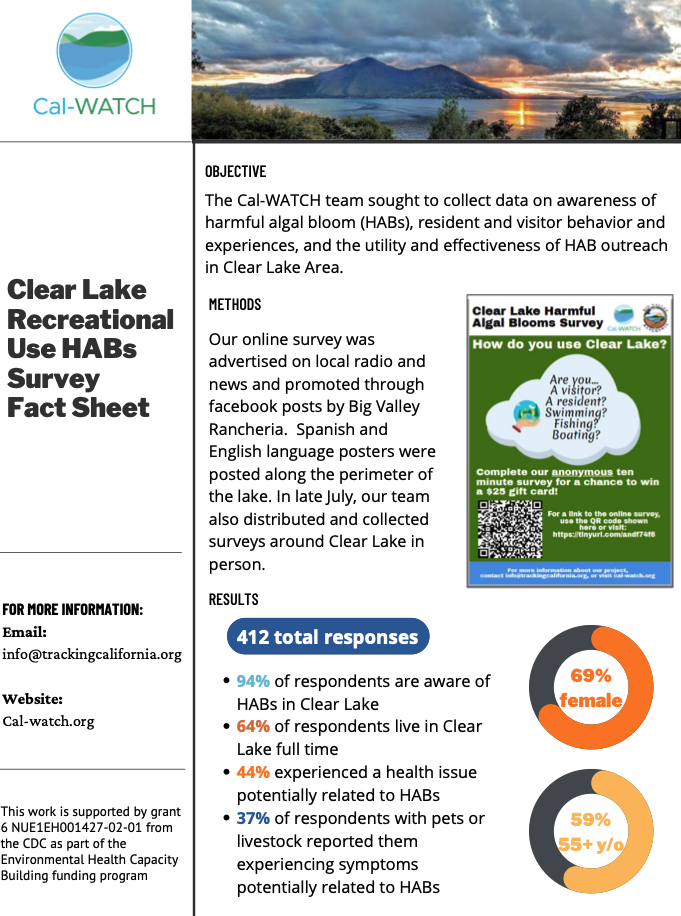
Results from Recreational use of Clear Lake Survey
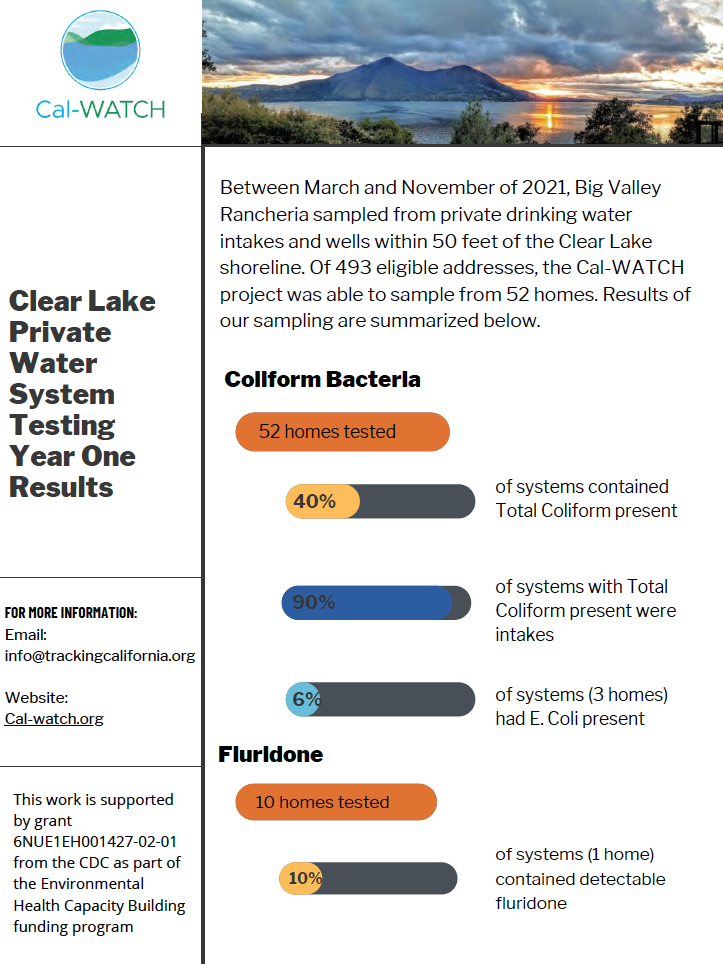
1st Year Study Results from Drinking Water System Testing
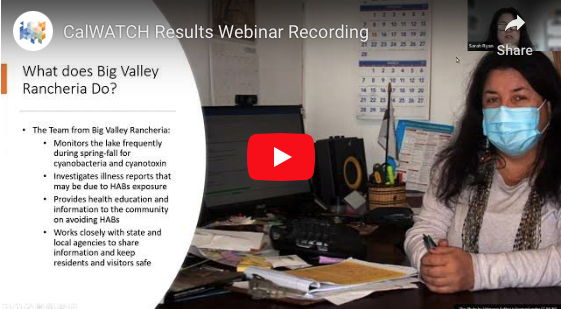
1st Year Participant Results Webinar
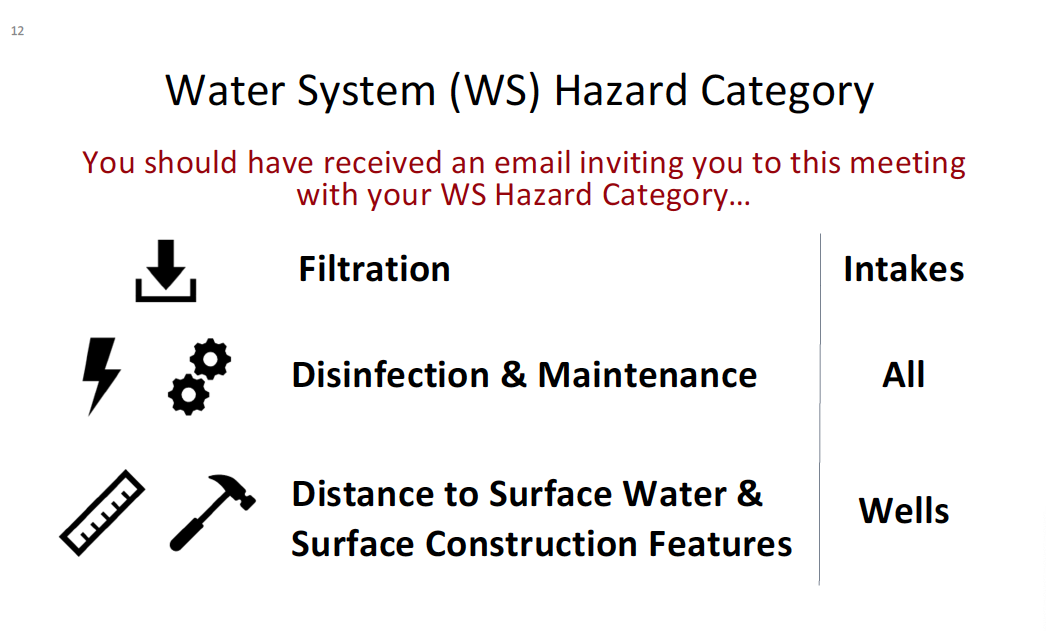
2nd and 3rd Year Study Results Drinking Water Webinar Slides
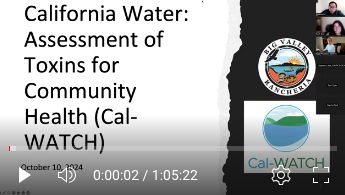
2nd and 3rd Year Study Results Drinking Water Webinar
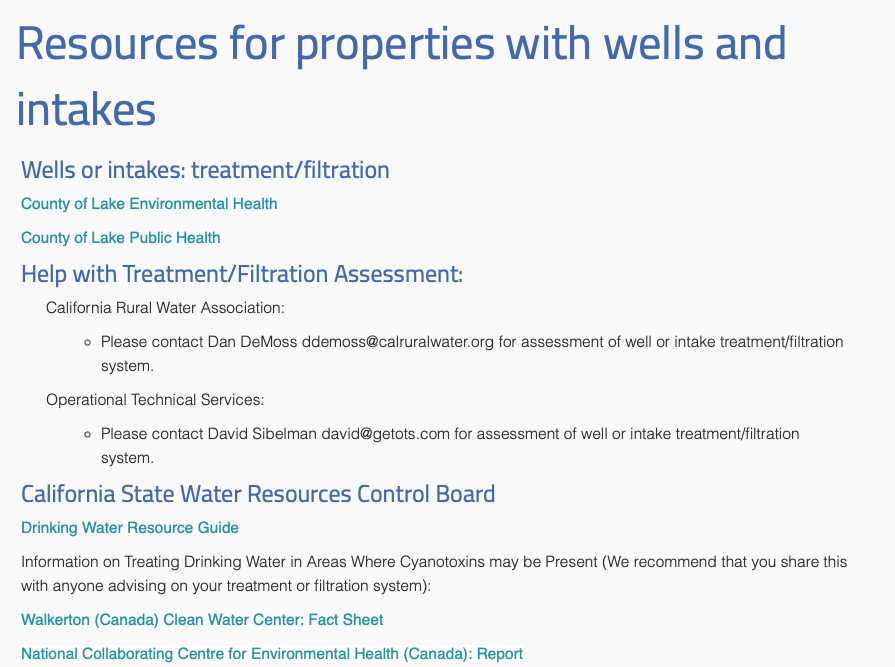
Resources for Private Well and Intake Owners
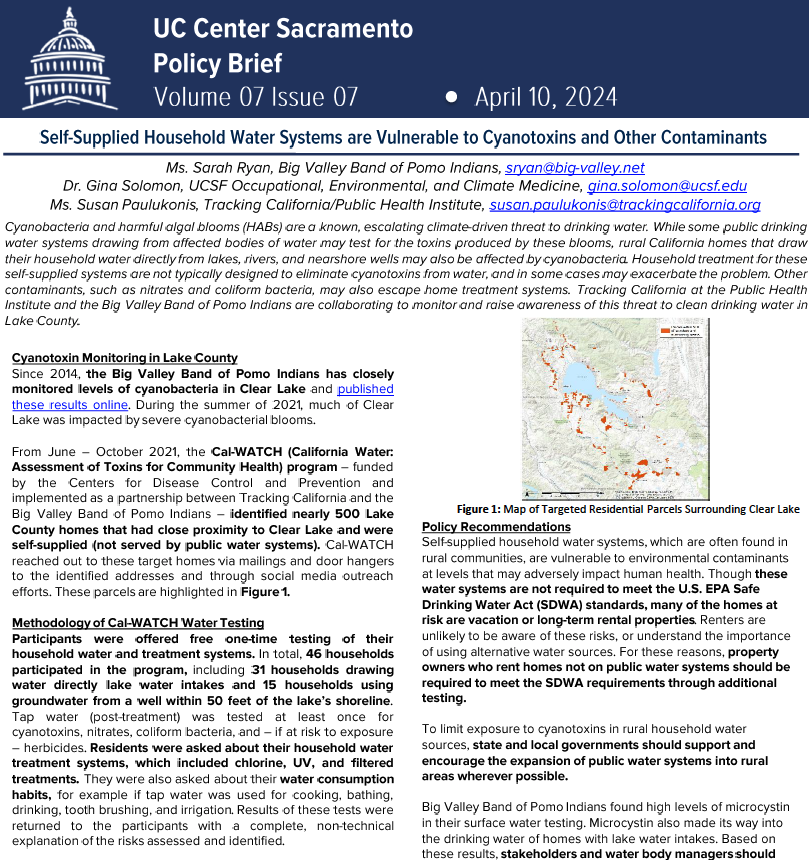
UC Center Sacramento Policy Brief
Project Publications
- Notes from the Field: Harmful Algal Bloom Affecting Private Drinking Water Intakes - Clear Lake, California, June - November 2021 [2022] Gina Solomon, Beckye Stanton, Sarah Ryan, Catherine Carpenter, Susan Paulukonis
- Microcystins at the tap: A closer look at unregulated drinking water contaminants [2023] Beckye Stanton, Amy Little, Lisa Miller, Sarah Ryan, Susan Paulukonis, Stefan Cajina

